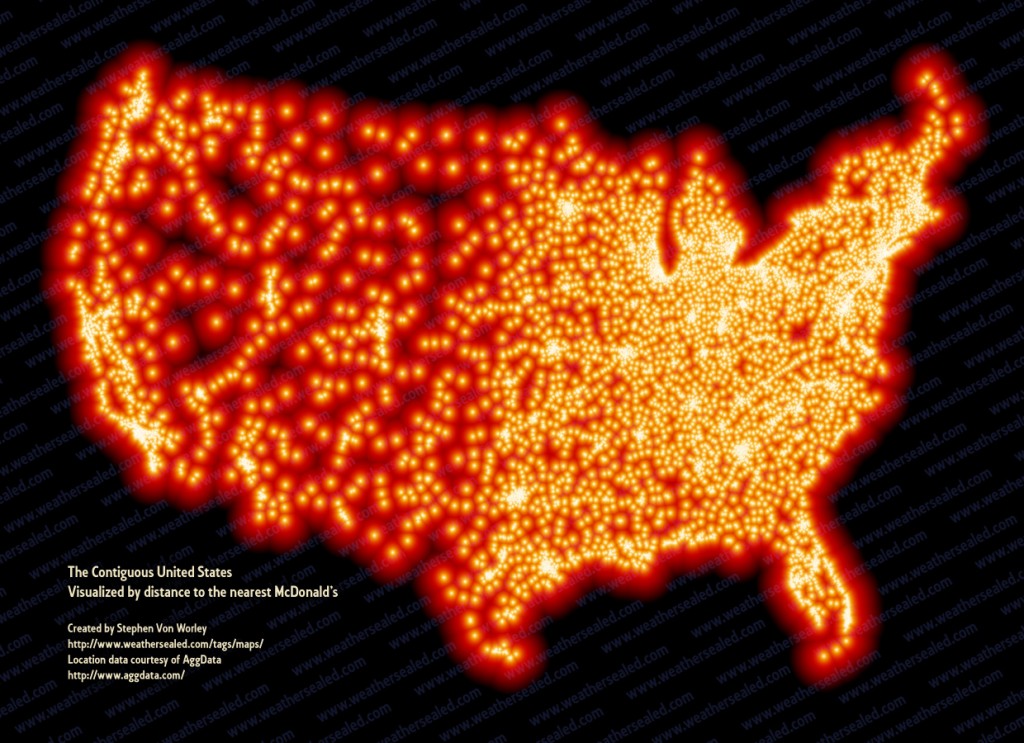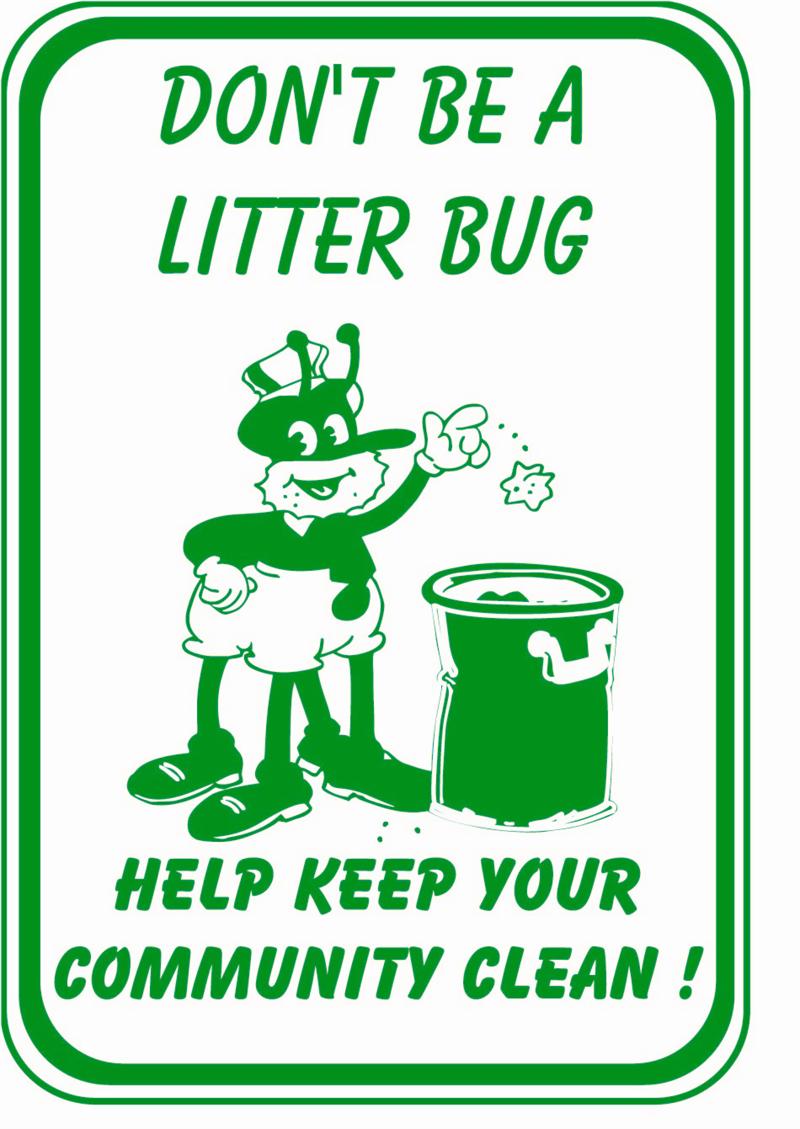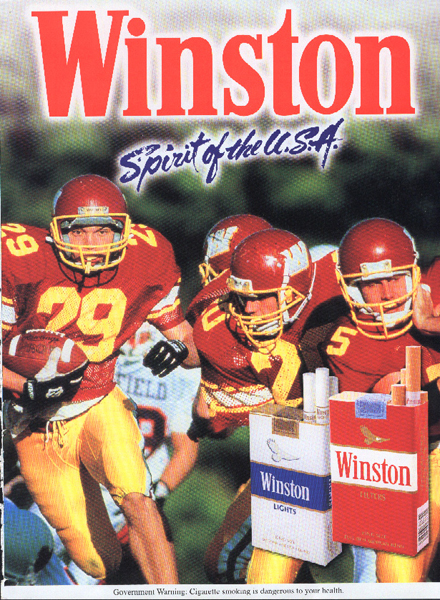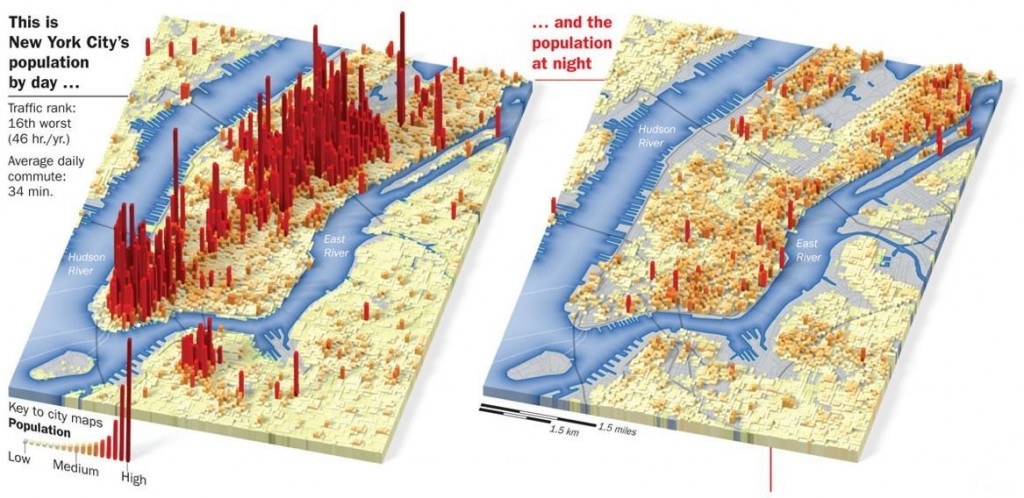Nikki L. sent us a link to this fascinating Tickle Me Elmo commercial. In introduces a new Tickle Me Elmo product, “Tickle Hands.”
The ad takes place on what appears to be an urban street (reminiscent of Sesame Street). Two of the kids appear white, while the other two look (probably deliberately vaguely) “racial,” maybe Asian and Latino (perhaps biracial). At the very end of the commercial the kids pose in front of a brick wall with a picture of Elmo graffiti-style. Two of them look like they’re flashing gang signs and Elmo, no joke, says “Yeahhhhhh Booooy.” Here’s a screen shot of the moment:
So let’s trace the evolution of the gangster meme.
1. Government policy strips urban centers of resources, jobs leave (along with useful things like grocery stores), housing prices fall and the poor become concentrated, and those with means move to the suburbs. With few “above ground” economic options, people turn to “underground” economies. With only the “underclass” left, politicians (who tend to listen more to those with economic power and cultural clout) continue policies that disinvest in urban communities of color. Say “goodbye” to things like nice parks and excellent fire protection.
2. In a world where obeying the rules gets you nowhere fast, violence flourishes.
3. The suffering and resourcefulness of young black, Latino, and Asian men in these communities appeals to a (mostly) white “mainstream” America for whom depictions of men of color doing violence confirms their beliefs about white superiority and advanced “civilization.” Hip hop and rap music becomes a huge money maker for music studios and producers (and a handful of men of color).
4. As hip hop and rap become commodified, they are depoliticized. The “oppositional consciousness” that once characterized these art forms becomes largely lost. For the most part, any artist that wants to “make it” has to be and say what producers think that mainstream Americans want them to do and say.
5. Now depoliticized, being “hard” and “urban” becomes synonymous with being “cool.” Everyone wants to be cool.
6. Being “gangster” is appropriated by white suburban youth.
7. Stripped of any meaning, it filters down to younger and younger kids.
Enter: Tickle Me Elmo “tickle hand” gang signs.
For more examples of this phenomenon, see these advertising images at a shoe store, Beyonce’s House of Dereon clothing line for girls, the marketing for the Alvin and the Chipmunks remake, and these candy “grills.”
—————————
Lisa Wade is a professor of sociology at Occidental College. You can follow her on Twitter and Facebook.
Lisa Wade, PhD is an Associate Professor at Tulane University. She is the author of American Hookup, a book about college sexual culture; a textbook about gender; and a forthcoming introductory text: Terrible Magnificent Sociology. You can follow her on Twitter and Instagram.





